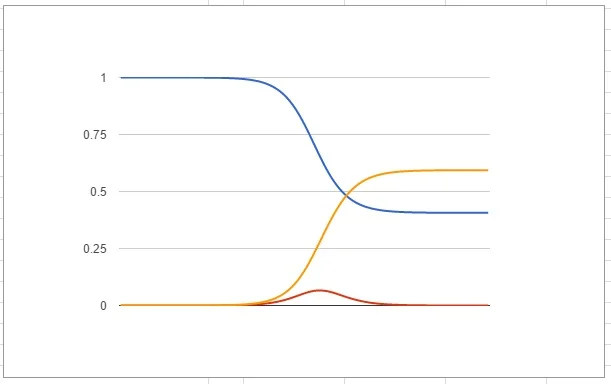My Favourite Mathematicians That Didn't Have Noses
It is surprising that a list like this can be made in the first place, but unfortunately I only know of two mathematicians/scientists that lost their noses. Both were quite interesting in their own right so I thought it would make a nice article.
Up first is Tycho Brahe, a Danish Nobleman born in 1546:
In the days before he lost his nose (or perhaps afterwards but with a painter that didn't want to point out the misfortune).
When he was 20 Brahe was involved in a dispute with a fellow Nobleman named Manerup Parseberg who happened to be his third cousin. Over the course of about a month the quarrel escalated and they decided to settle the matter with a duel (in the dark for some reason). Brahe suffered a slice that took off the bridge of his nose and left a large scar on his forehead.
From this point on Brahe wore a nose made from gold glued to his face. Or so the rumour of the time went; an excavation of his grave in 2010 has suggested that it was actually made from brass.
Brahe worked as an alchemist, astrology and astronomer and was one of the first scientists to apply mathematics to the heavens. He rejected the Ptolemaic System for the Solar System that said that everything orbited the Earth and instead came up with a different, yet equally wrong model. The Tychonian System said that the planets all orbited the Sun (correct), but that the Sun and the Moon orbited the Earth (half correct) like this:
Everything in yellow orbits the Sun, which in turn orbits the Earth. The stars appeared fixed relative to each other so they were modelled on the inside of a huge sphere.
Tycho Brahe's system was discredited soon after by his younger colleague Johannes Kepler, but he was instrumental in collecting the data which informed Kepler's work. He was at the end of an era where mysticism and science were entwined and his correct predictions about the movement of celestial bodies was muddied with his use of them to make astrological predictions about the weather and royal births. It was this side of his work that provided an income for his more outlandish purchases of scientific equipment.
My favourite story about Brahe concerns his pet. He owned a tame elk which would often make an appearance at dinner parties in the courts. At one point one of his friends asked whether the elk would be coming to the next party, but he was informed that it would not as it had died falling down the stairs drunk after drinking too much beer.
Ok, let's go on to the other mathematician. Born in 1893 Gaston Julia was 20th century mathematician who had his nose shot off at the start of the first world war. After having several surgeries to try to save it he eventually gave up and wore a leather strap over his face which gave him an appearance of a witch doctor from the plague.
Gaston Julia
By the end of the war he had successfully finished his treatise, a 199 page article titled "Mémoire sur l'itération des fonctions rationnelles" which featured in the Journal de Mathématiques Pures et Appliquées. (He was French.) Translating that both into English and normal speak it was about feeding rational functions (as a rational number can be written as an integer over an integer, a rational function can be written as a polynomial over a polynomial P(x)/Q(x) ) back into themselves to generate fractals. His work was original and in particular he had a famous fractal called the Julia Set, but it faded into obscurity until Benoit B Mandelbrot* mentioned them as the basis for his work in the 1980s.
The Julia Set
The Mandelbrot set is much better known than Julia's work, but they are related. Each just has a slightly different function as it's generator. I'll leave you with a zoom of the Mandelbrot set which is the standard way to end a conversation about fractals, plus it makes a great wall display for a party if you have a projector:
*Mathematician joke: What does the B. stand for in Benoit B. Mandelbrot?
Benoit B. Mandelbrot.











